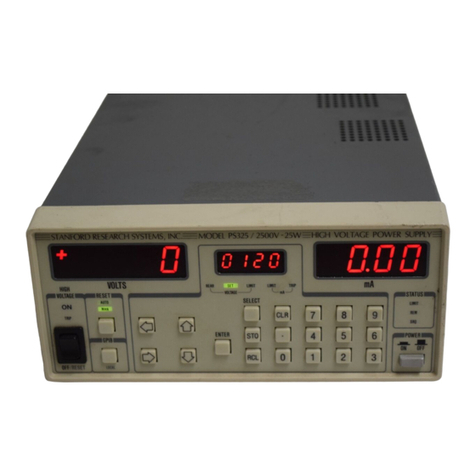
iii
General nformation
The PS300 Series High Voltage Power Supplies are general purpose
instruments designed for laboratory environments.
This unit contains hazardous high voltages. Make certain the high
voltage is completely discharged before removing the cable. The
charge on the cable can cause injury or damage.
The PS300 series supplies operate from a 90 VAC to 264 VAC
power source having a line frequency between 47 Hz and 63 Hz.
Power consumption is less than 80 VA total.
A power entry module, labeled AC POWER on the back panel of the
PS300, provides connection to the power source and to a protective
ground.
The PS300 uses a detachable, three-wire power cord for connection to
the power source. The exposed metal parts of the box are connected
to the power ground to protect against electrical shock. Always use
an outlet which has a properly connected protective ground.
The rear-panel high voltage connector and the BNC shields are also
connected to chassis ground. The PS300 series supplies CANNOT
be floated.
The line fuse is internal to the instrument and may not be serviced
by the user. Operate only with covers in place to avoid personal
injury. Do not remove the product covers or panels. Do not operate
the product without all covers and panels in place.
The PS300 does not include any user-serviceable parts inside. Refer
service to a qualified technician.
Warning
Line Voltage
Service























